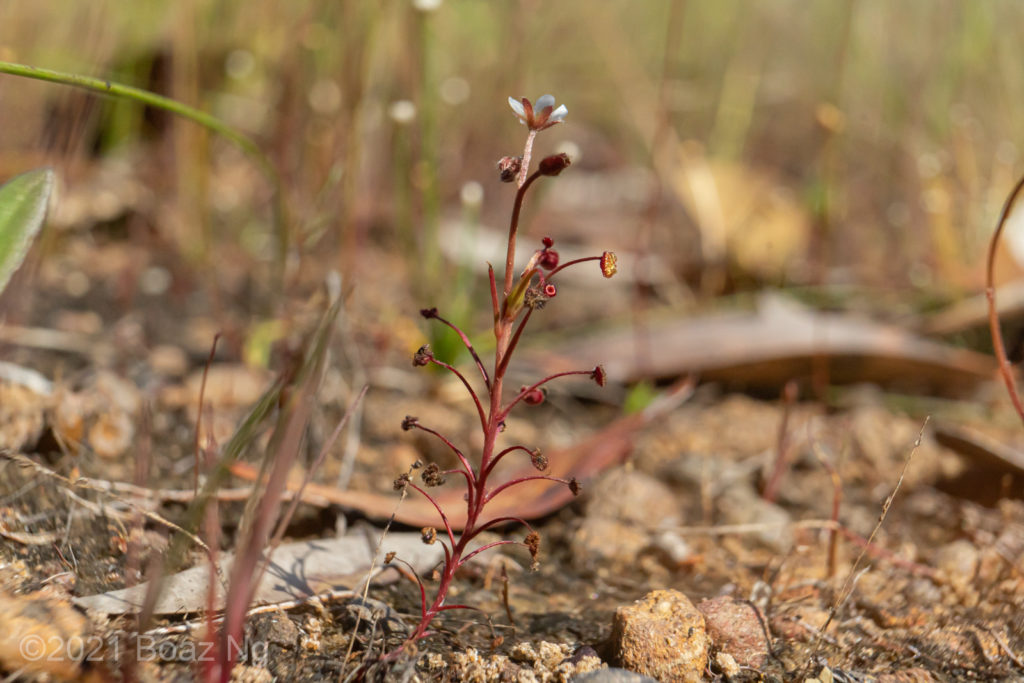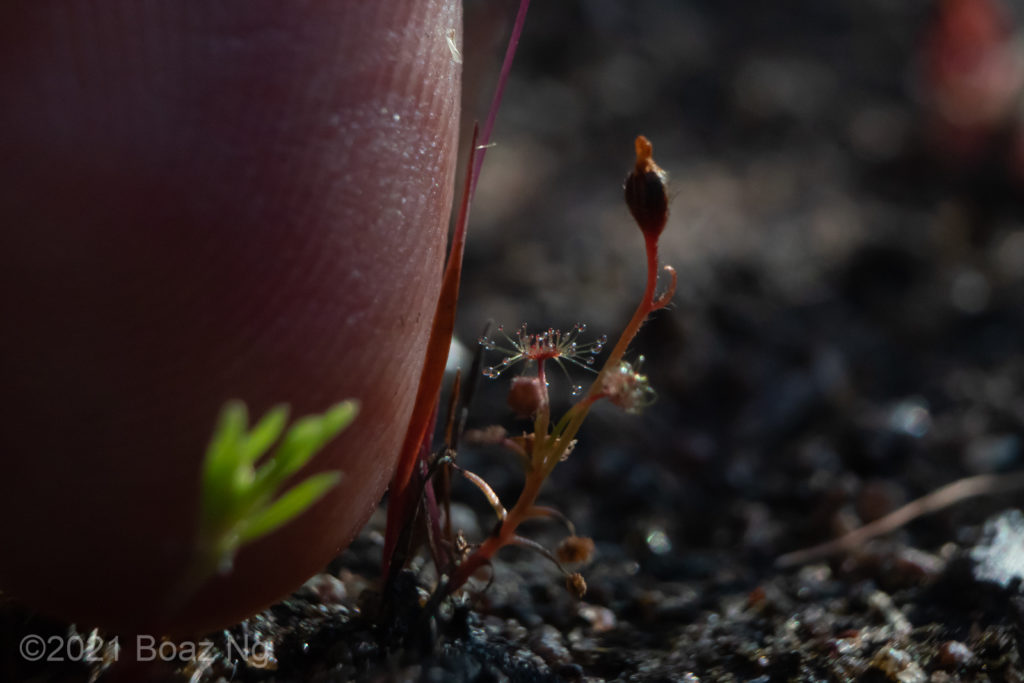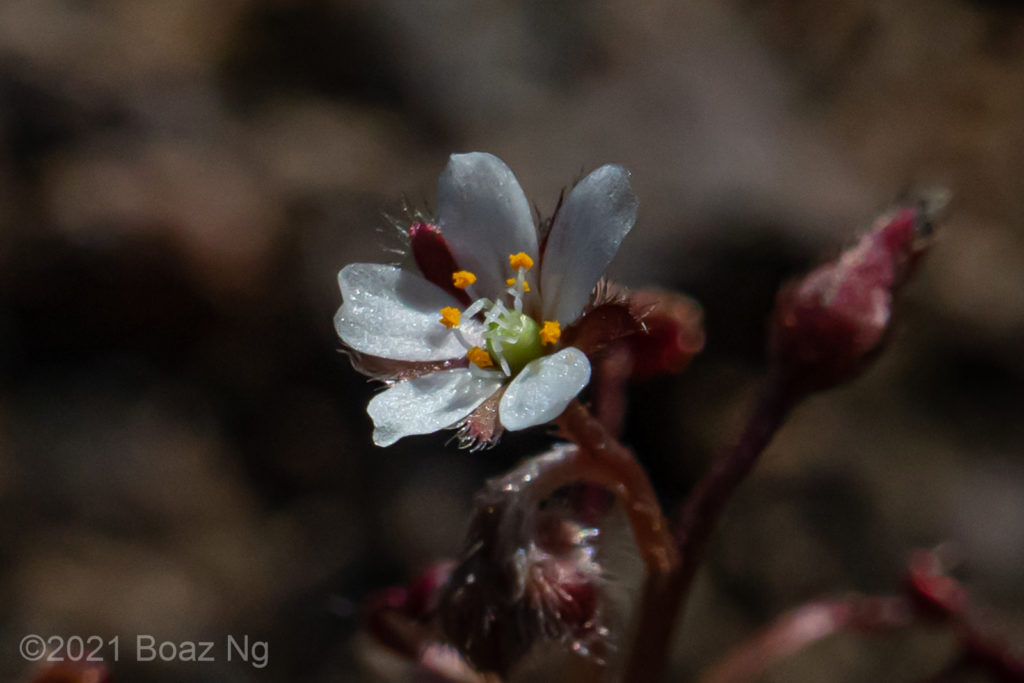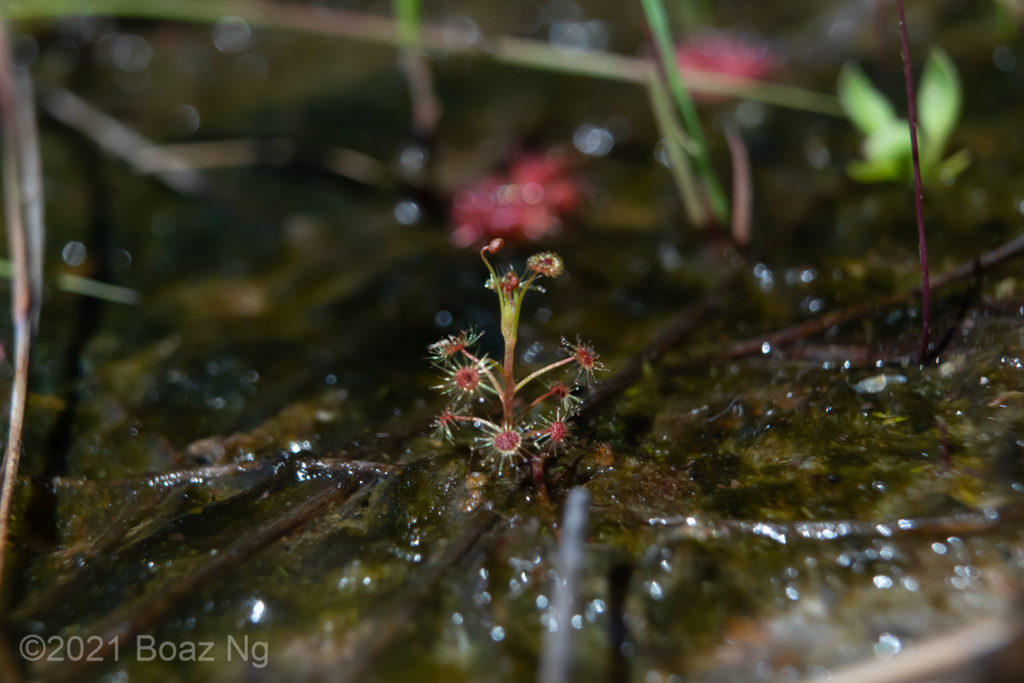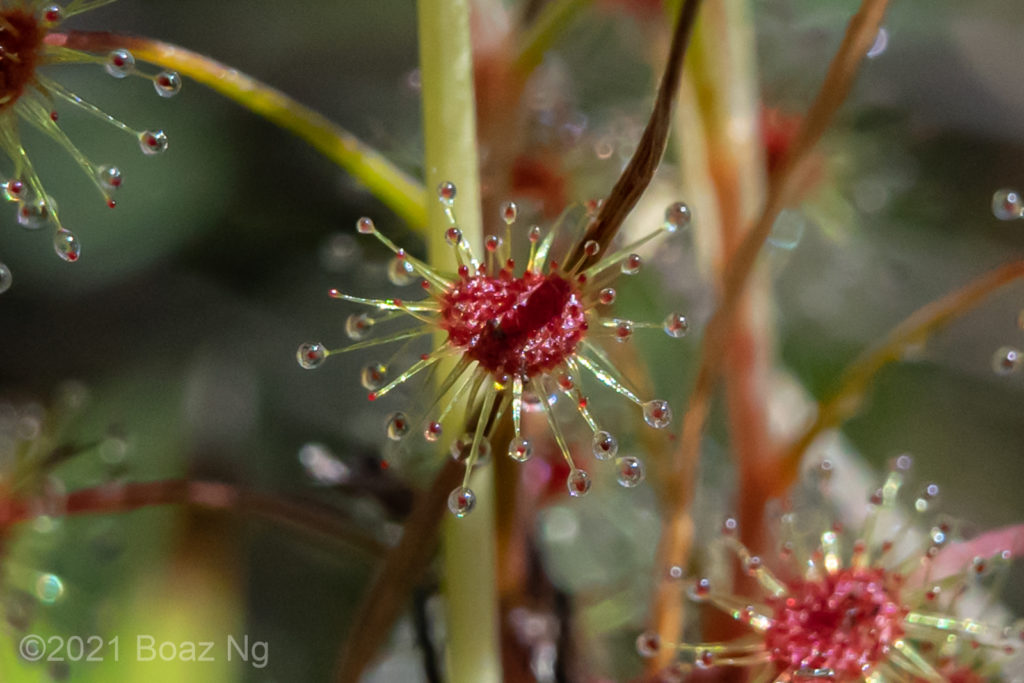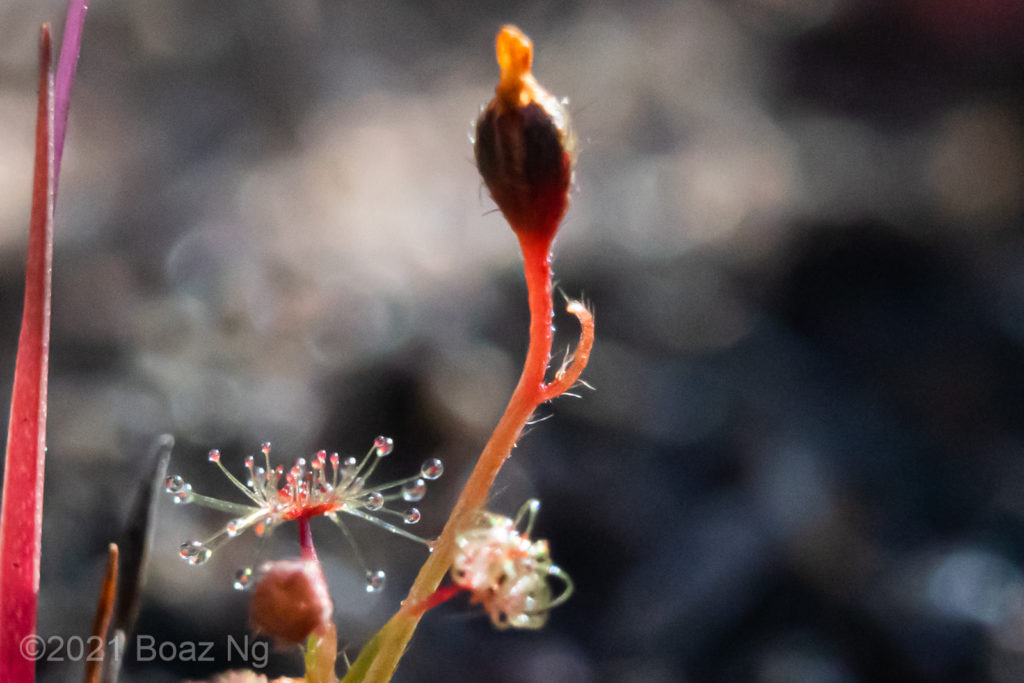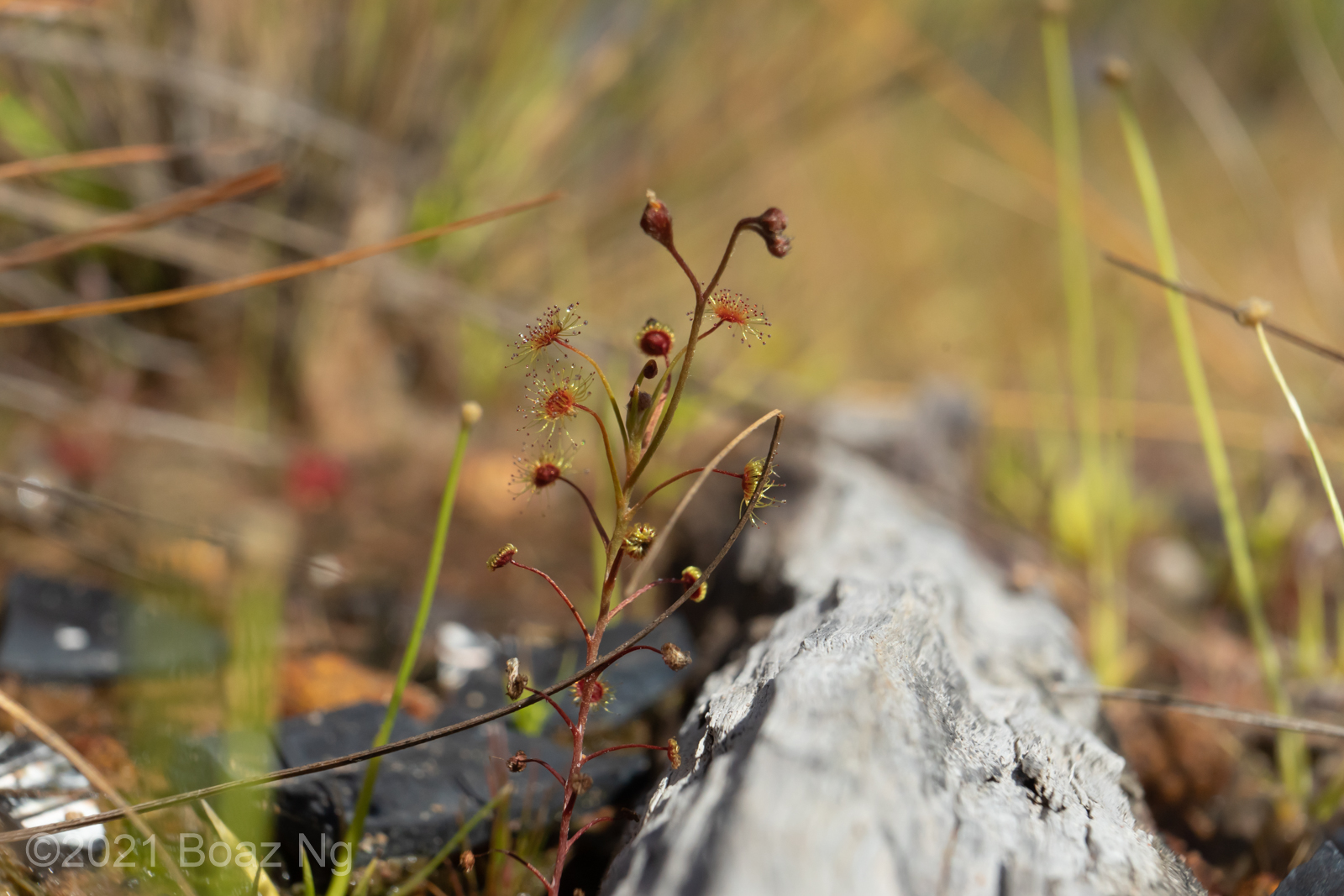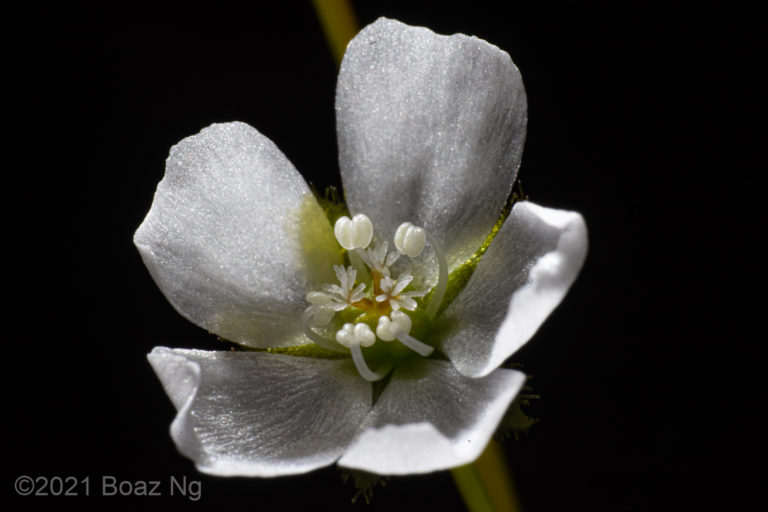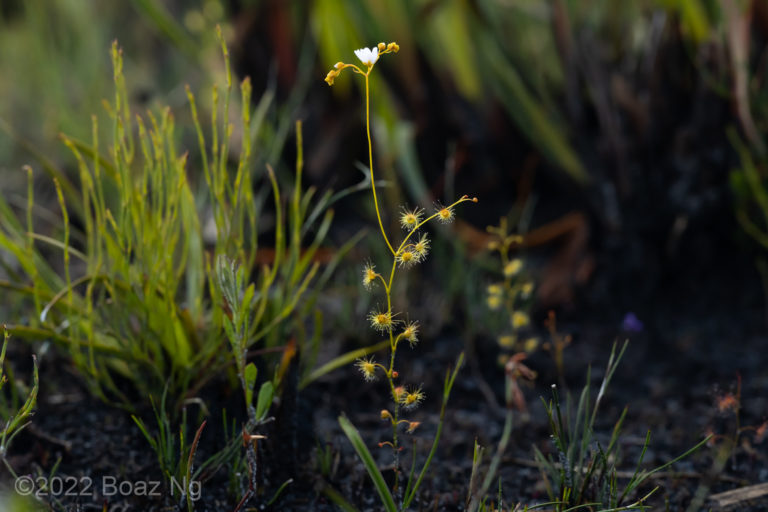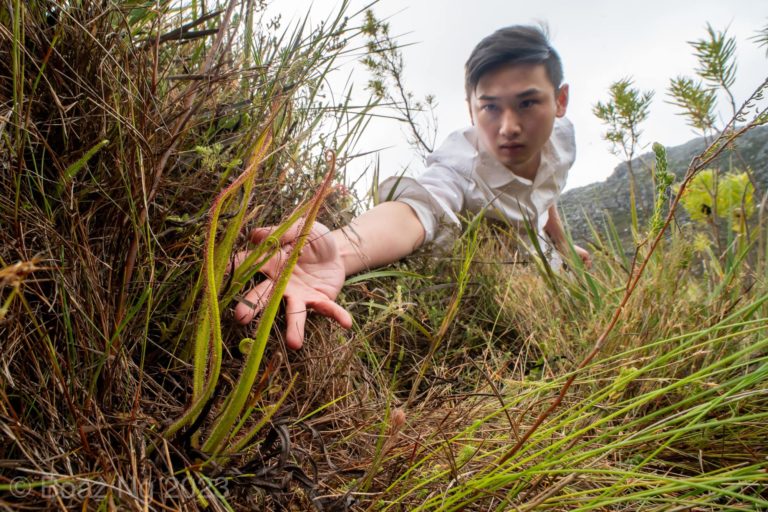Drosera banksii is an annual species native to tropical Australia, and PNG whose taxonomy has confused experts.
The species is variable in size, with a fleshy erect stem that reaches from 2-30 cm high depending on how good its immediate environmental conditions are. Arching petioles emerge from the central stem, terminating in a reniform lamina that is usually coloured tawny orange. The entire inflorescence is covered in long hairs and the flowers are white.
D. banksii grows in monsoonal areas of Northern Australia. The species germinates during the wet season and comes to bloom with the onset of the dry season as its habitat begins to dessicate. The species is strictly annual and is induced to produce seed no matter how large the plants are – I have even observed seedling sized specimens in a particularly dry location come to flower. The plants can be found in gravelly soils near creeks.
The exact taxonomic relationship of D. banksii is currently unknown. It was previously grouped with the section Ergaleium (erect tuberous sundews) given the superficial resemblance of its erect stem and reniform leaves. The species is not tuberous. Current phylogenetics places it within the section Lasiocephala (the petiolaris complex) but differs to other species by its annual nature and erect morphology.
D. banksii can be confused with D. subtilis, both of which form a fleshy erect stem. D. banksii is distinguished by its inflorescence, which is covered with hairs (D. subtilis is fully glabrous).
